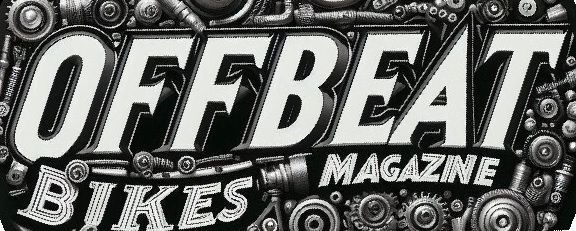
Now I know that you always to do things properly, but there are some times when you need a quick, short-term fix using whatever you have to hand. In this case effecting a successful bodge can be quite satisfying.
One such occasion happened to me recently. After weeks of bad weather, illness and prior engagements, I had finally managed to find time to take the trials bike out for a play. Imagine then, my disappointment when I noticed after a riding for a short while that the bike was overheating. To say that I was a little annoyed was an understatement. I may even have uttered a swear word or two.
Amid fears that it was something terminal - like a blown head gasket - eventually the overheating was diagnosed as being caused by a non-working fan.
Luckily, because I am a pessimist, I take a few tools with me in case running repairs are needed. Unluckily it didn’t include a multi-meter, which as it turns out would have been useful. (Next time it will.)
With 12V connected direct to the fan (using a car booster pack that someone had to hand) it sprang into life, meaning that it was an electrical fault somewhere, probably a broken wire. Oh goody! What fun! At least the wiring loom on a trials bike is minimal.
Much time was spent tracing the wiring, wiggling and cleaning connectors, until eventually a wire to the rectifier was found to have broken off, right at the end of a crimped on terminal in a 4 way connector block.

Good, now I’d found the problem, but could I effect a solution? Trying to wiggle the terminal out of the connector block to see if the wire could be reattached had just resulted in a broken crimp terminal.
Eventually, after alternately staring at the bike, the tools I had available and back again, the brain slowly started to formulate a plan. The spade terminals on the rectifier had a small hole through them, and I had a reel of stainless lockwire. Was it small enough to fit through the hole? Result! Would it twist up and provide a secure connection? Yes! Things were looking up.
Now, would the twisted wire thread through the space in the connector block where the broken terminal was and allow the plug to push back onto the rectifier? Wiggle. Wiggle. Wiggle. Yep, it fits! So, if I strip back the broken wire and twist it up together with the lockwire, does the fan work when I start the bike? Whoohoo! Wrap in tape. Job done.
Cue many happy hours riding my trials bike. And, yes, I did fix it properly when I got home.
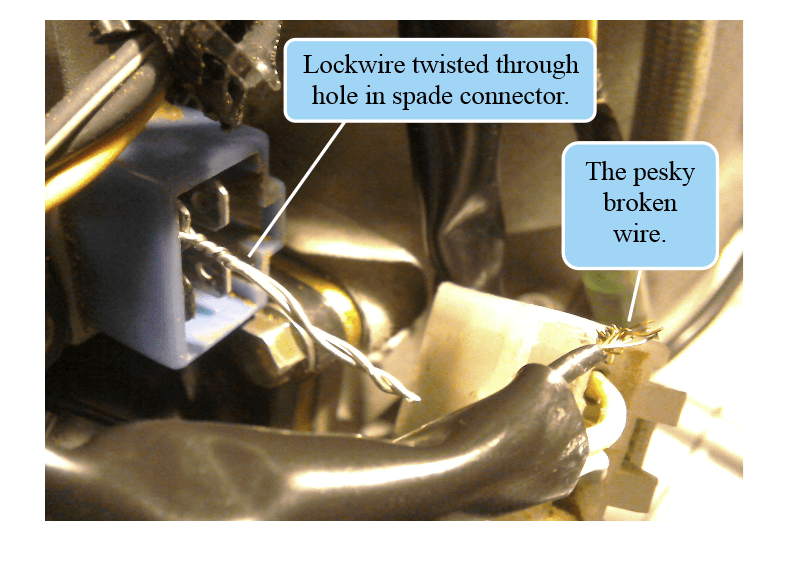
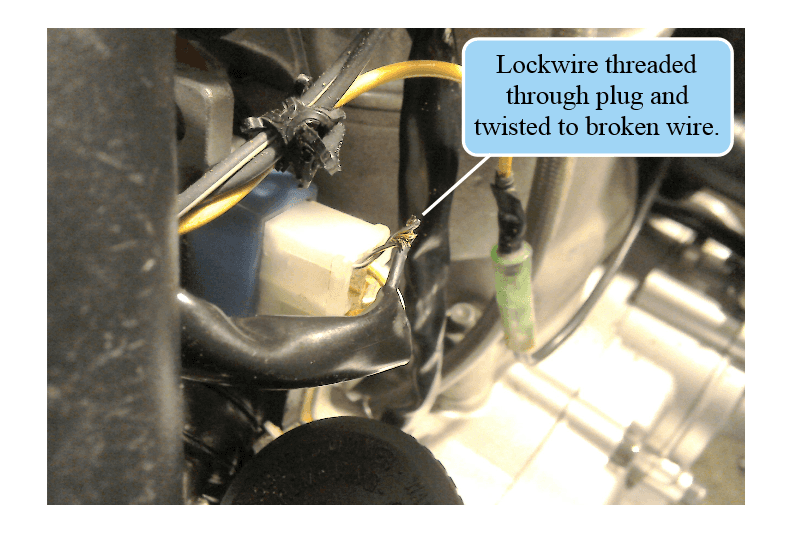

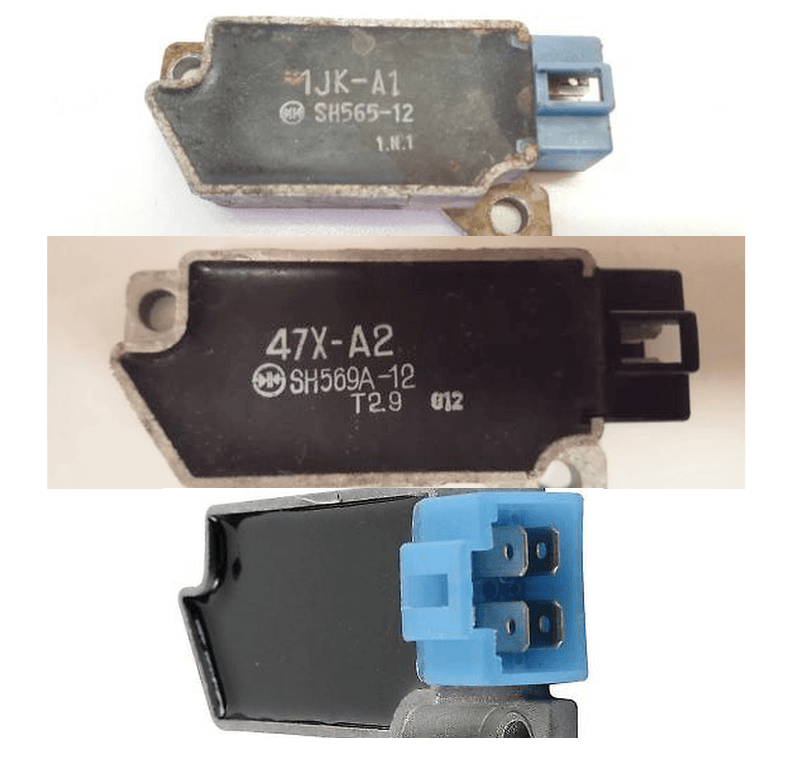
The top two should be easy, you can see that the numbers on them are different, but other than that, these two Yamaha regulator / rectifiers are exactly the same size, same shape and have the same 4 pin connector. This leads many people to believe that they are interchangeable. Not just owners, but some breakers and ebay sellers also think that these two are the same.
The bottom one is a pattern part. It bears no markings at all, so you have to trust that the seller has listed it correctly and knows their stuff. And in a lot of cases they don’t. Put 1JK-A1 (the part number from the top reg / rec) in a search and you will find listings that will sell you a part that claims to be a direct replacement for this, but also a direct replacement for the reg / rec pictured below it, the 47X-A2. This can’t possibly be the case, the 1JK is a single-phase rectifier, the 47X is a three-phase rectifier - they are not interchangeable! (If the single-phase / three-phase thing is all new to you, fear not, we will touch on this in a future Offbeat Bikes magazine article.)
You’ll also find the same if you search using the part numbers used by Shindengen, the manufacturer of the OE part. Search for SG565-12 or SH569-12 and you will find that, again, some sellers think that these are interchangeable. So, it is very much a case of ‘buyer beware.’
It is easy to say that you should steer clear of these cheap pattern parts, but they’re very attractive when the OE part costs £125! I’ve highlighted this case, because it’s something that I found out whilst looking for spares for my own bike. I’m sure there are other parts out there that also cause confusion.
If in any doubt, question the seller thoroughly before you part with cash. Fortunately there are still specialist sellers on the internet who truly know what they are talking about. Rex’s Speed Shop is a website I’ve used recently, but there are others if you are prepared to look.

Ok I’ll say it, the dreaded word - Ethanol - are we right to be worried about the potential negative effects of ethanol on our bikes when it’s added to our petrol?
I know that the amount of ethanol added to petrol varies from country to country, but in the UK up to 5% ethanol can be added to unleaded petrol - and they don’t need to tell you that it’s there. This is a quote direct from the AA website, which provides a summary of current UK fuel legislation: “At this level (5%) there’s no issue of compatibility with car fuel systems and no need to mark pumps to tell customers that the fuel may contain biofuel.”
Although if the stories are correct, and I don’t doubt them, then there are several owners of bikes with GRP tanks who would beg to differ with the no issue of compatibility statement.
So the chances are that standard unleaded fuel (usually labelled E95 at the pumps) will probably contain ethanol of some concentration up to 5%. But, don’t think that filling up with super-unleaded (E97) will guarantee you an ethanol free fuel. Of the major fuel brands, only Esso specifically states on its website that its E97 does not contain ethanol. But even that is dependent on your location in the UK. If you live in the Devon/ Cornwall region, the Teeside area or Scotland, then you are likely to have ethanol in your fuel regardless of whether you buy E95 or E97. That situation is likely to be the same for most of the major fuel brands, since they often use the same refineries. But crucially, remember that should that change, and they decide to add up to 5% ethanol in the future, they don’t have to tell you…

Moving on from the ethanol discussion of last week, here are a couple of fuel funnies that I’ve found with our bikes. Now, I’m not putting either of these down to ethanol. Down here in Suffolk, I’m fairly confident that the E97 I’m using is ethanol free, and for good measure, I also add a fuel stabiliser.
The first funny is the inline fuel filter used on my trials bike (see pic below). I put this down to interaction (over time) between the materials used in its manufacture and the petrol. This does seem a bit daft, when the item in question is a fuel filter. You’d think it would be designed so as not to be affected. As you can see, the fuel filter deforms into a banana shape, discolours and seems to shrink a bit. It still does it’s job, but it seems a bit odd that it should be affected to such a degree.
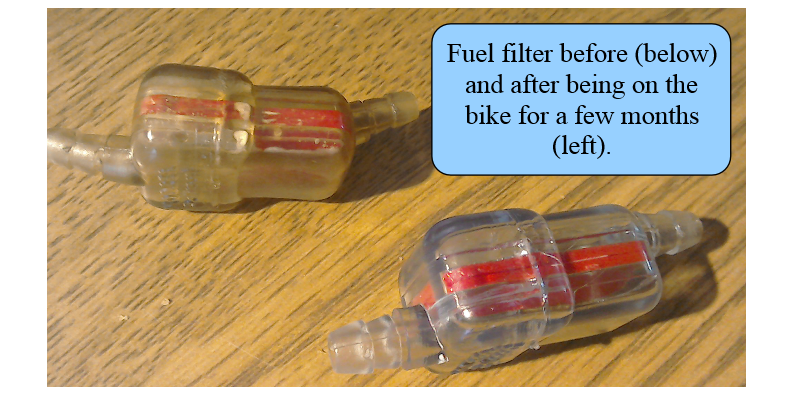
It’s not sited in a high heat area, so I think it’s fuel rather than heat causing the damage. These are Polisport branded filters ( a fairly well known brand in the off-road world) so you’d really expect them to know their stuff.
The other funny occurs with the little trials bike that we have. It is fitted with a 4 stroke, 125cc Yamaha engine. The little bike runs sweetly enough, but if you leave it parked up for a day or two, it won’t start. For some reason, leaving it with fuel in the float bowl causes the pilot jet to block.
The only solution then is to remove the carb and clean the jet. And on a modern trials bike, that is a real pain. Everything is so tightly packed that to get to the carb you have to remove the rear mudguard, then the little sub-frame, then the airbox, wiggle the carb out, clean the jets, then stick it all back together again.
Once cleaned and reassembled, the bike starts and runs like a top. If, however, the float bowl is drained after use, the next time you come along and turn the fuel on, it fires up with no trouble. So, I can only assume that the fuel (or the presence of fuel) is the problem. But what happens, I just don’t know. I use the same fuel, with added fuel stabiliser, in all of the other bikes without any trouble at all.
